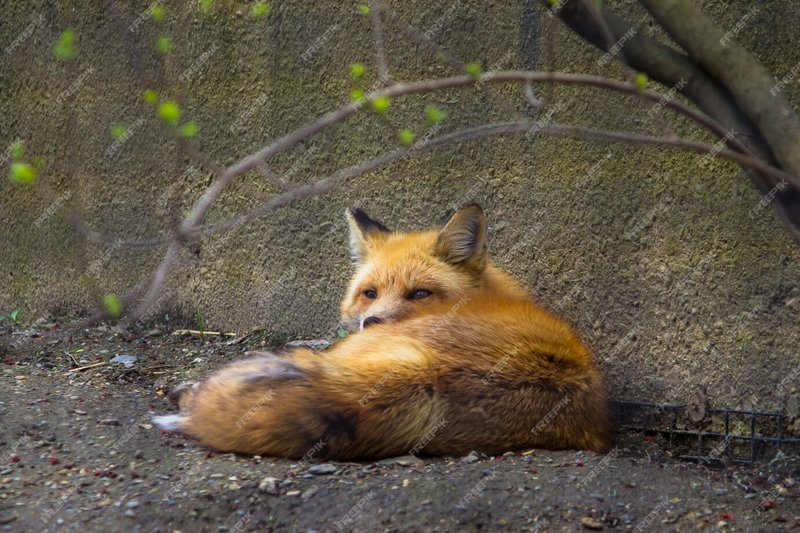
Think of a fox encounter like coming across an unexpected guest at a dinner party. You don’t want the moment to turn awkward, but you also don’t want to scare them off. So, how do you navigate this situation? Let’s break it down step by step, so you’re fully prepared should you find yourself face-to-face with these fascinating animals.
Understanding Fox Behavior
Before diving into what actions to take, it helps to understand a bit about foxes. These animals are naturally curious and tend to be more cautious than aggressive. Honestly, they often prefer to avoid humans altogether. If you spot one, it’s likely that it was just as surprised to see you as you were to see it.
Foxes are mostly crepuscular, meaning they’re most active during dawn and dusk. This means if you’re walking in nature around those times, you have a higher chance of encountering one. In the wild, they hunt small mammals, birds, and, believe it or not, they have a taste for fruits and vegetables too! Their diet gives them a variety of energy sources to keep them nimble and quick.
When you see a fox, watch its behavior. If it’s frozen in place, it might be assessing whether you pose a threat. If it starts to walk away slowly, it’s likely just trying to give you space. Understanding these nuances can help you decide your next move.
Stay Calm and Assess the Situation
So, you’ve spotted a fox. What should you do first? Stay calm! Panic can lead to irrational decisions. Instead, take a deep breath and assess what’s happening. Here’s a quick checklist to keep in mind:
- Distance: Are you close enough to see details, or is it far off?
- Behavior: Is the fox acting nervous, or does it seem unconcerned?
- Background: Is there a den or a litter of kits nearby?
If you’re at a distance, it’s great! Enjoy the moment and watch how the fox moves. If it’s close, you might feel the urge to take a photo. However, be sure to maintain a safe distance—this isn’t a petting zoo. Also, avoid any sudden movements, as this could startle the animal.
If you notice that the fox seems agitated, it could be protecting its young. In that case, it’s best to back away slowly and quietly. The last thing you want is to provoke a wild animal, so respect its space.
What Not To Do When Encountering a Fox
Now that you know how to assess the situation, let’s discuss what not to do. It’s easy to get caught up in the excitement and forget the boundaries of wildlife. Here’s a handy list to keep you on track:
- Don’t approach: Getting too close can stress the fox and put you at risk.
- Don’t feed it: Foxes are opportunistic eaters, and feeding them can lead to more frequent encounters.
- Don’t turn your back: If the fox seems agitated, keep your eyes on it, but don’t look aggressive.
Each of these actions can create a negative experience—for you and the fox. Remember, you’re in its territory, not the other way around.
How to Handle a Close Encounter
It’s one thing spotting a fox from a distance, but what if it’s a little too close for comfort? Here are some tips on how to handle a close encounter effectively:
Firstly, don’t run. Trust me, running can trigger a chase response. Instead, stand tall and slowly back away while maintaining eye contact. If the fox approaches you, it’s usually just curious, but it’s important to show it that you’re not a threat. Use a calm voice to talk it down. Phrases like “Hey there, buddy” can help diffuse the tension.
If the fox doesn’t seem to back off, consider making yourself look larger by raising your arms or waving a jacket. Loud noises can also help, so clapping your hands or making a fuss might encourage it to go away. Here’s the thing, your goal is to feel safe while ensuring the fox feels secure, too.
Enjoying the Experience
Even if you feel a little nervous when encountering a fox, try to enjoy the magic of the moment. Watching a fox in its natural habitat can be incredibly rewarding. Think of it as a chance to connect with nature.
If the fox moves away peacefully, take a moment to appreciate what you just saw. Maybe it’s a reminder that wildlife is all around us—even in urban areas. Capture the moment in your mind, or if you’re an avid photographer, snap a picture from a safe distance.
Plus, these encounters can ignite a spark of curiosity. You might find yourself wanting to learn more about local wildlife and conservation. How cool is that?
Understanding Local Regulations
Before heading out, it’s good to familiarize yourself with local wildlife regulations. Many parks have guidelines about wildlife encounters to ensure safety for both animals and people.
Check if there are any specific rules about not feeding wildlife or how to report a sick or injured fox. Some areas even have designated wildlife watching spots. Being informed helps you respect the animals and enjoy nature responsibly.
Check out your local wildlife agency or park service website for more information. This way, you’re not just prepared for an encounter but also a responsible nature lover.
What to Do If You Feel Threatened
In rare cases, a fox may act aggressively, especially if it feels cornered. If you find yourself in a situation where the fox isn’t backing down and appears threatening, it’s important to keep calm but be assertive.
Make noise and try to scare it off—yell or clap your hands. Stand your ground rather than turning your back. If it gets too close, look for nearby shelter or a place to retreat. Always prioritize your safety.
If you feel threatened and the situation starts to escalate, consider contacting local wildlife authorities. They can help assess the situation safely and humanely.
Final Thoughts on Fox Encounters
Encounters with foxes in the wild can be both thrilling and educational. By staying calm and respecting their space, you can have a memorable experience that may even inspire you to learn more about wildlife. Remember, the key is to observe and appreciate—not to interfere.
Next time you find yourself enjoying a quiet nature moment, keep your eyes peeled. You never know when a fox might pop into your view, reminding you of the beauty that lies just beyond the city streets. So, step outside, breathe in that fresh air, and who knows? You might just have a fantastic story to tell about your brush with nature!

